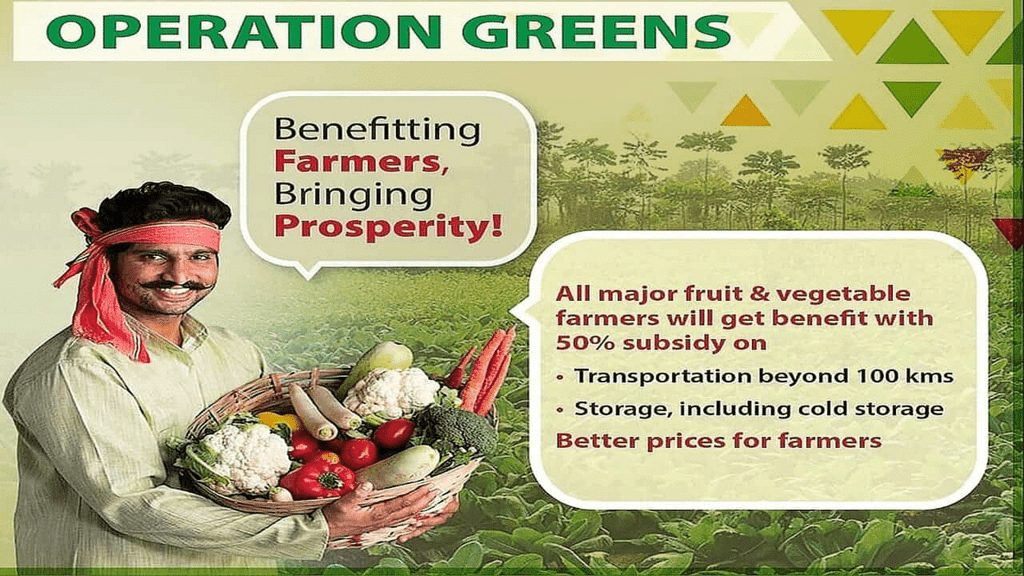UPSC Daily Current Affairs- 19th March 2023 | Current Affairs & Hindu Analysis: Daily, Weekly & Monthly PDF Download
| Table of contents |

|
| GS-I |

|
| GS-II |

|
| GS-III |

|
| Need for Price or Income Assurance for Farmers |

|
GS-I
Venus

Why in News?
Recently, NASA Magellan spacecraft captured images of Venus’ surface from different orbits. A few locations, including those suspected to have volcanic activity, were observed two or three times over two years.
About Venus:
- Venus the second planet from the sun, is the hottest and brightest planet in the solar system.
- Venus is highly visible from Earth due to its reflective clouds.
- Venus and Earth are often called twins because they are similar in size, mass, density, composition and gravity.
- With respect to other planets, Venus and Uranus spin backwardswhich means for these two planets, the sun rises in the west and sets in the east.
What are the findings of the Magellan spacecraft?
- A 2.2 square kilometre volcanic vent on Venus changed shape in eight months, indicating volcanic activity.
- It showed signs of drained lava, hinting at activity and eight months later, radar images indicated that the same vent had doubled in size and the lava lake seemed to have reached the rim.
- The vent is associated with Maat Mons, Venus’s second-highest volcano.
- It sits in the Atla Regio, a vast highland region near Venus’ equator. These changes were likely due to lava flow escaping the vent, hinting at a possible volcanic activity.
Key facts about the Magellan spacecraft
- It was one of the most successful deep space missions of NASA..
- It was the first spacecraft to image the entire surface of Venus and made several discoveries about the planet.
Source: DownToEarth
The Decolonization Drive: Monuments of National Importance Reflects Bharat’s history

Why in News?
The decolonization drive started by the present government in India to change the British mindset of those responsible for writing history books, which led to the neglect of important monuments and archaeological sites. The Economic Advisory Council’s report on Monuments of National Importance, which he sees as a significant step in the right direction for the preservation and designation of monuments that reflect Bharat’s history. There are some anomalies in the list of monuments of national importance and suggests changes in the way India looks at the preservation of monuments.
What are the recommendations given by the report?
- Rationalise and evolve criteria for India’s list of monuments: The report underlined the urgent need to rationalise India’s list of monuments of national importance and recommended that the ASI should evolve substantive criteria and a detailed procedure for declaring monuments to be of national importance.
- Book of detailed information: ASI should publish a book of notifications with detailed information about each MNI’s provenance, hand over protection and upkeep of monuments of local importance to respective states and denotify to the extent possible, all standalone antiquities like cannons and statues.
- Funds: Allocation of funds for the preservation of MNI should be increased and ASI should retain the proceeds generated from revenue streams like tickets, events, fees and other sources.
Neglect of Monuments and Archaeological Sites in Post-Independence India
- Inadequate efforts: After India’s independence, little effort was made to correct the British mindset of those responsible for writing history books, which resulted in the neglect of monuments and archaeological sites.
- British view of India: History books continued to teach the history of India’s defeats and its enemies’ victories, which perpetuated the British view of India.
The Decolonization Drive under the present Government
- National Heroes: The present government led by PM Modi started the decolonisation drive to bring out the sagas of King Suheldev, Rani Durgavati, and Lachit Barphukan, among others.
- For example: The government highlighted the story of the founder-king of Delhi, Anangpal Tomar, and declared the neglected Anang Tal as a monument of national importance.
- Names, sites, insignia of national importance: The government also held national and international events at the Sindhu-Saraswati site of Dholavira and unveiled a new Shivaji-era inspired naval insignia.
Significance of this Report
- The Economic Advisory Council’s report on Monuments of National Importance is a significant step in the right direction.
- The report will bring a whiff of fresh thinking in the direction of preserving and designating monuments that reflect Bharat’s history.
- All the recommendations made by the report can be implemented without amending the Ancient Monuments and Archaeological Sites and Remains Act and need only executive orders.
Anomalies in the List of Monuments of National Importance
- There are some anomalies in the list of monuments of national importance.
- There is not a single monument connected with the struggles of Dalits and B R Ambedkar’s life that has been declared a national monument.
- Some monuments, like Tota-Maina ki Qabar and Dadi Poti ka Gumbad, have no history, and nobody knows whether they should be declared as Monuments of National Importance.
- Therefore, all agencies working on monuments be unshackled from the British slave mindset and given into the hands of those who know their subject.
Conclusion
There is hope that the Bibek Debroy-Sanjeev Sanyal report will bring a whiff of fresh thinking in the direction of preserving and designating monuments that reflect Bharat’s history. There is the need for an Archaeological Foundation to preserve the civilizational and revolutionary monuments of India.
Source: PIB
GS-II
Poshan Pakhwada
Why in News?
The Ministry of Women and Child Development will celebrate the fifth Poshan Pakhwada from 20th March 2022 to 3rd April 2023 with various activities nationwide.
About Poshan Pakhwada:
- The Poshan Pakhwada aims to raise awareness about the importance of nutrition and promote healthy eating habits through Jan Andolan and Jan Bhagidari.
- The theme of this year’s Poshan Pakhwada 2023 is "Nutrition for All: Together Towards a Healthy India".
- With the declaration of 2023 as the International Year of Millets, this year the focus of Poshan Pakhwada will be to popularise ‘Shree Anna’- the mother of all grains, as a valuable asset to address malnutrition.
- The activities during the Poshan Pakhwada will focus, inter alia, on the following key themes:
- Promotion and popularization of Shree Anna / Millets for nutritional- well-being through the organization of drives to link Millet-based foods with supplementary nutrition, Home visits, Diet consultation camps, etc
- Celebration of Swasth Balak Spardha: Celebrate and recognize the ‘Swasth Balak’ or Healthy Child as per defined criteria by generating a healthy spirit of competition for good nutrition good health and well being
- Popularize Saksham Anganwadis: Campaigns will be organized to increase awareness and popularise Saksham Anganwadis with upgraded infrastructure and facilities as centres of improved nutrition delivery and early childhood care and education.
- Nodal Ministry: Ministry of Women and Child Development
What is Poshan Abhiyaan?
- Poshan Abhiyaan, launched by the Prime Minister of India on 8th March 2018, has been instrumental in ensuring people’s participation and bringing the discourse on nutrition to the forefront.
- Poshan Abhiyan was launched to improve nutritional outcomes holistically.
- Behavioural change at the individual and community levels is an important component to achieve the desired goals of a Kuposhan-mukt Bharat.
Source: PIB
International Criminal Court issues arrest warrant against Vladimir Putin

Why in News?
The International Criminal Court (ICC) has issued an arrest warrant for war crimes for Russian President Vladimir Putin and Maria Lvova-Belova, Russia’s commissioner for children’s rights.
Charges against Putin
The ICC issued the warrants because it believes that Putin bear individual criminal responsibility for the war crime of –
- Unlawful deportation of population and
- Unlawful transfer of population from occupied areas of Ukraine to the Russian Federation
The ICC and its Background
- The ICC is a standing body created two decades ago to investigate war crimes, genocide and crimes against humanity under a 1998 treaty known as the Rome Statute.
- The court is based in The Hague, a Dutch city that has long been a center for international law and justice.
- Many democracies joined the ICC, including close American allies such as Britain.
- However, the United States has kept its distance due to fears that the court may one day seek to prosecute American officials.
- Russia is also not a member.
Implications of the Warrants
- Human rights groups hailed the warrant as an important step toward ending impunity for Russian war crimes in Ukraine.
- The likelihood of a trial while Putin remains in power appears slim since the court cannot try defendants in absentia, and Russia has said it will not surrender its own officials.
- Putin’s isolation in the West deepens, and his movements overseas could be limited.
- If he travels to a state that is a party to the ICC, that country must arrest him according to its obligations under international law.
Possibility of Putin Facing Trial
- The ICC has no power to arrest sitting heads of state or bring them to trial, and instead must rely on other leaders and governments to act as its sheriffs around the world.
- A suspect who manages to evade capture may never have a hearing to confirm the charges.
Source: Indian Express
GS-III
Enzyme Laccase

Why in News?
Recently, researchers from S. N. Bose National Center for Basic Sciences (SNBNCBS), Kolkata, tested the efficacy of the laccase enzyme in degrading some standard dye molecules.
About Enzyme Laccase:
- Laccase is generated by a group of fungi that have been found capable of degrading a variety of hazardous organic dye molecules that are regularly drained into waterbodies after dying clothes in the textile industry.
- This observed characteristic which the scientists termed substrate promiscuity can have deep implications in designing enzyme-coated cassettes for treating heavily dye-polluted water.
- Laccase was known for its capacity to degrade various organic molecules.
- Laccase, generated by a group of fungi, contains 4 copper atoms in two different oxidation states, and degrades substrates through redox reactions, producing only water and the simplest non-virulent or less virulent oxides of carbon, nitrogen and sulphur.
- Hence the scientists saw scope in using it to develop a technology to treat/degrade the dye effluents emanating from textile industries.
- Combining UV/Visible spectroscopy and computer simulations they demonstrated that many organic dye molecules with varying kinetics and wide variation in charge, size and shape can be degraded by the enzyme laccase.
- This substrate promiscuity of laccase offers immense biotechnological potential for a broad-spectrum degrader for industrial dye effluents.
What is enzyme promiscuity?
- Enzyme promiscuity is defined as the capability of an enzyme to catalyze a reaction other than the reaction for which it has been specialized.
- Although the enzyme is known for its specificity, many enzymes are reported to be promiscuous.
What are enzymes?
- An enzyme is a substance that acts as a catalyst in living organisms and regulates the rate at which chemical reactions proceed without being altered in the process.
Source: PIB
Operation Greens Scheme: TOP Farmers Protests And A Way Ahead

Why in News?
The Operation Greens scheme aimed to develop a value chain for reducing extreme price fluctuations in the three basic vegetables (tomatoes, onions, and potatoes), enhance farmers’ realizations, and improve their share of the consumer rupee. However, the scheme has not been successful in achieving its goals, as seen by the recent protests against low prices by onion and potato farmers.
What is Operation Greens scheme?
- The Operation Greens scheme is a government initiative launched in the 2018-19 Union budget by the present government.
- It aims to develop a value chain for reducing extreme price fluctuations in the three basic vegetables, including tomatoes, onions, and potatoes (TOP).
- The scheme was later expanded to 22 perishable crops in the 2021-22 budget.
- The government hopes that by developing a sustainable value chain for these perishable commodities, farmers will benefit from better price realization, while consumers will have access to quality products at reasonable prices.
Limited Success of Operation Greens Scheme
- Retail tomato prices: Tomato prices in wholesale markets have dropped significantly, but retail prices have not reduced much, indicating limited success.
- Low Onion price: Onion and potato farmers are protesting against low prices, highlighting the scheme’s lack of effectiveness.
- For instance: There are protests by Maharashtra’s onion growers against low prices, including relay hunger fasts, stoppage of auctions at major mandis, and a 200-km march to Mumbai. Similarly, potato farmers in Uttar Pradesh have demanded that the government procure their tuber at Rs 10 per kg, as against the ruling Rs 6-6.5/kg market price at Agra.
Reasons behind its limited success
- Problem Not with Lack of Storage or Processing Capacity: UP alone has an abundance of cold stores with ample capacity to store perishable goods like potatoes. Maharashtra’s growers have built enough kandha chawls to store onions for 4-6 months. Despite the creation of storage capacity, price volatility persists in milk and cane payment arrears to farmers.
- Price Volatility: The prices of TOP crops have been volatile, which has adversely affected both farmers and consumers. The prices of these commodities tend to fluctuate sharply due to seasonality, weather conditions, and other factors, resulting in uncertainty and instability in the market.
- Implementation Issues: The scheme’s implementation has been marred by delays, bureaucratic hurdles, and lack of coordination among various stakeholders, which has resulted in low participation and limited success.
- Lack of Market Linkages: Another reason for limited success is the lack of market linkages between producers and consumers. The farmers are unable to access markets directly, which leads to dependence on intermediaries who manipulate prices, resulting in price volatility.
Need for Price or Income Assurance for Farmers
- Investment: Investment in farm-gate, agri-logistics, and storage-cum-processing infrastructure needs to be encouraged.
- Assurance: Price or income assurance for farmers is necessary, especially for horticulture, dairy, and poultry producers who do not enjoy minimum support price benefits.
- Diversification: The future for Indian agriculture lies in crop diversification, which will spur greater consumption of foods incorporating proteins (pulses, milk, eggs, and meat) and micro-nutrients (fruits and vegetables), instead of only calories and carbohydrates.
- Deficiency price payments: The deficiency price payments or per-hectare direct income transfers could be the way forward.
Conclusion
It is evident that the limited success of the Operation Greens scheme underscores the urgent need for a more comprehensive approach to address the challenges faced by TOP farmers. A more holistic approach is required that prioritizes farmer empowerment, investment in infrastructure, and promotion of crop diversification. By adopting such an approach, the government can not only mitigate the impact of price volatility on farmers but also achieve its broader goal of building a sustainable and resilient agricultural sector that benefits both producers and consumers alike.
Source: PIB
|
38 videos|5288 docs|1117 tests
|
FAQs on UPSC Daily Current Affairs- 19th March 2023 - Current Affairs & Hindu Analysis: Daily, Weekly & Monthly
| 1. What is the significance of GS-I in UPSC exams? |  |
| 2. What are the key topics covered in GS-II for UPSC exams? |  |
| 3. Why is it important to stay updated with daily current affairs for UPSC exams? |  |
| 4. What are the key areas covered in GS-III for UPSC exams? |  |
| 5. How can candidates prepare effectively for the GS-I, GS-II, and GS-III papers in UPSC exams? |  |
















